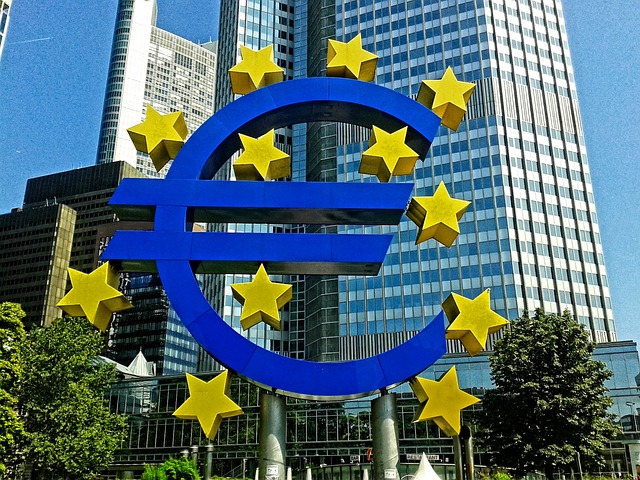Brent prices dropped to $35 per barrel, which constitutes a significant downside risk to the ECB's inflation scenario and is likely to refuel talks of further monetary accommodation through, in particular, another cut in the deposit rates in 2016.
In early December, the ECB revised down its inflation forecasts for 2017 by 0.1%, both on headline and core to respectively 1.6% and 1.5%. Meanwhile, the central bank decided to cut its deposit rate by a similar 0.1% to -0.3% in order to avoid any retightening in monetary conditions, keeping therefore medium-term real yields stable.
However, the latest ECB forecasts were made under the assumption that Brent prices will average $52.2 and $57.5, respectively, for 2016 and 2017. As a result, in its last economic bulletin the ECB expects favourable base effects in energy prices to help push up inflation by 1.3% between November 2015 and October 2016.
Assuming oil prices remain stable at $35, it is estimated that the base effect linked to energy prices for 2016 could be roughly half the ECB's expectations. So, while Eurozone inflation would still pick up in the coming two months, it will only reach a high point at around 0.6% y/y in January. Beyond this, inflation would once again move down before reaccelerating only in H2. So, all in all, Eurozone y/y inflation next year could be more around 0.5%/0.6% vs. 1.0% expected by the ECB and with a high risk in the first half of the year to see it once again cruising around the 0.0% y/y line.
Scotiabank argues that the impact of energy prices on inflation is only temporary and could, therefore, be ignored by the ECB. However:
- First, there is some pass-through from lower oil prices into core inflation. Looking to historical elasticity, we estimate that this pass through would, in particular, mainly impact core industrial goods in the months ahead. As a result, we estimate that core inflation could end up being between 0.1% and 0.2% lower than expected by the ECB in 2017.
- Second, inflation over the past few years has proved to be below expectations, which points to a growing sensitivity between short term inflation trends and medium term inflation expectations. This is what the ECB called the risk of "un-anchoring inflation expectations". In financial markets, this has been visible through a rising correlation between oil prices and 5Y in 5Y inflation swaps. In order to limit this risk, a weaker exchange rate is key, especially in an economy where the output gap remains negative and there is therefore little build up in domestic inflationary pressures. Indeed, in recent months there has been a rising inverted correlation between 5y in 5y inflation swaps and the EUR/ USD. So, the lower the oil price, the lower the EUR/USD needs to be!
All in all, lower oil prices could once again put pressure on the ECB to further "recalibrate" its monetary policy, added Scotiabank research notes.



 South Korea Central Bank Warns of Rising Financial Stability Risks Amid Won Volatility
South Korea Central Bank Warns of Rising Financial Stability Risks Amid Won Volatility  BOJ Governor Signals Gradual Rate Hikes as Japan’s Inflation Nears 2% Target
BOJ Governor Signals Gradual Rate Hikes as Japan’s Inflation Nears 2% Target  FxWirePro: Daily Commodity Tracker - 21st March, 2022
FxWirePro: Daily Commodity Tracker - 21st March, 2022  RBA Signals Possible Interest Rate Hike in 2026 as Inflation Pressures Persist
RBA Signals Possible Interest Rate Hike in 2026 as Inflation Pressures Persist  Vietnam Central Bank Faces Challenges Meeting 2026 Economic Growth Target Amid Global Uncertainty
Vietnam Central Bank Faces Challenges Meeting 2026 Economic Growth Target Amid Global Uncertainty  Gold Prices Fall Amid Rate Jitters; Copper Steady as China Stimulus Eyed
Gold Prices Fall Amid Rate Jitters; Copper Steady as China Stimulus Eyed  BOJ Signals Further Rate Hikes as Inflation and Weak Yen Remain in Focus
BOJ Signals Further Rate Hikes as Inflation and Weak Yen Remain in Focus  South Korea Warns Weak Won Could Push Inflation Higher in 2025
South Korea Warns Weak Won Could Push Inflation Higher in 2025  Brazil Holds Selic Rate at 15% as Inflation Expectations Stay Elevated
Brazil Holds Selic Rate at 15% as Inflation Expectations Stay Elevated 
































